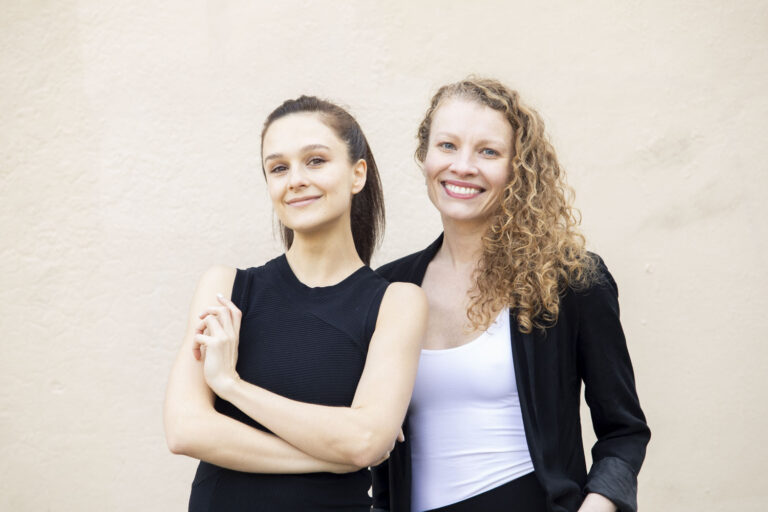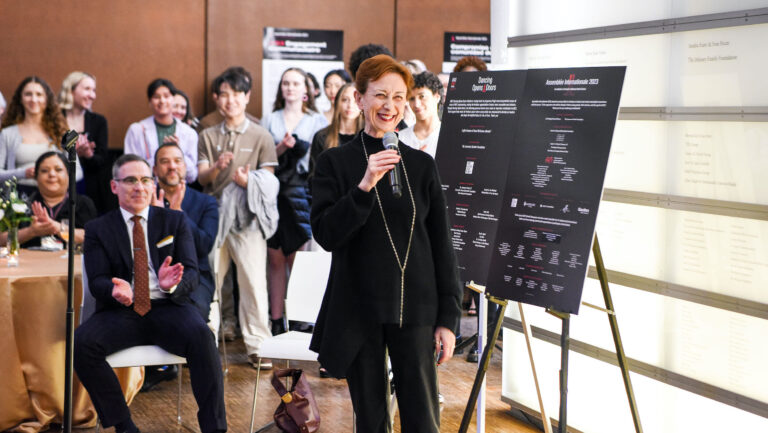
Following the aftermath of the Iraq War (2003–11), ballet teacher Leezan Salam is cultivating a generation of young dancers in Baghdad through her dance school, Iraqi Ballet. Salam founded the ballet school in 2013, and, since then, it has grown into a place of inspiration and enrichment for young dancers—but not without the challenges that have come from decades of oppressive political rule and war.
In 2005, when Salam was 9 years old, she began ballet training at the Music and Ballet School of Baghdad (MBS). At the time, and even now, dance was considered to be haram (shameful) among the Iraqi community. “At first there were 30 girls in my ballet class, but by the time I was in 10th grade, there were only three of us left,” says Salam. “I’m so grateful I stayed the course.” It was Salam’s time at MBS that eventually led her to open her own dance school and share her love for ballet with the next generation.
As with most dance teachers across the world, the ongoing COVID-19 pandemic brought on several challenges for Salam. Yet as life slowly returns to normal in Bagdad, Salam has begun to notice that the appetite among young people to take up ballet has grown. Salam teaches the Vaganova technique to approximately 60 students. In fact, hers is the largest, most thriving ballet school in Iraq, open four days a week in a studio inside a secure building. “I’m prioritizing safety for my students, that’s why I rent a studio that has high security,” she says. “Baghdad has some unsafe areas and I want to make sure my students can learn ballet in a safe and secure environment.”
With lockdowns lifted, Salam has begun to notice that young Iraqis are now more inclined to take up dance and celebrate life. “The Iraqi community [seems to have] changed a little,” says Salam. “The new generation is much more open to the arts. Of course, there are still some people who think ballet is haram and forbidden, yet those people tend to be of the older generation and are much harder to convince. My mission is mainly focused on the new generation who will go on to challenge the stereotypes around dance and celebrate this beautiful and inspiring artform,” she explains.
Salam is mainly focused on showcasing recitals within the community, but she soon hopes to develop a competition program to hone in on her students’ talents. Many of her students even have the desire to dance internationally. “The hardest challenge I’m currently facing is how to try and bridge the gap between the students’ cultural upbringing and their ambitions,” she says. “I’m not just working with the students; I’m also working with their parents. But by developing my students’ technique and artistry, I’m showing parents how their children are finding happiness and success through ballet. And in doing so I hope to eventually gain the support of the entire community,” she says.
Salam’s hard work over the years seems to be coming to fruition. “The imagination and agility I see ballet bringing to young lives to me indicates a bright future for this war-torn community,” she says.
In fact, Salam’s students are a testament to her hopes and dreams. “I love ballet because it makes me feel stronger, beautiful and healthy,” says Mimi, one of Salam’s students.
“When I listen to the music, I can’t stop myself from dancing,” adds Shams, 11. “Ballet takes me to another world. It makes me feel like I’m flying.”





